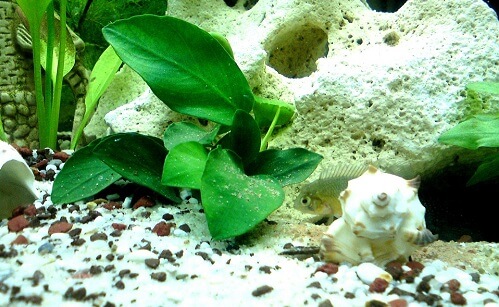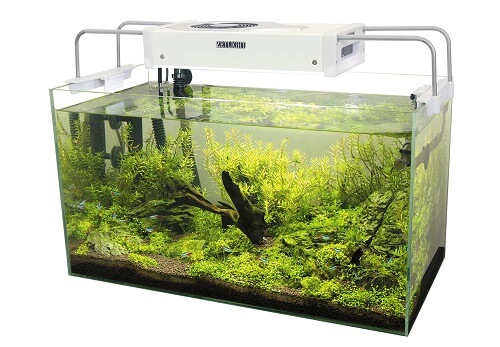Set up an aquarium to determine whether the new ecosystem will be viable is essential before introducing fish. To get started, select an aquarium of at least 30 liters in volume. Maintaining a biological balance in the aquarium is crucial, and choosing a container of this size will help. If you plan to keep small fish like guppies, mini aquariums with a volume of 10 liters can be an option.
When you buy an aquarium, it’s essential to check if it’s properly sealed. To do this, fill the container with water and let it sit for a day. If no water leaks out, then the aquarium is well-sealed. Next, clean the empty aquarium using laundry soap or baking soda.
Basic rules for set up an aquarium for adding fish
River sand is suitable as a substrate for an aquarium. You can take a regular one, but it needs to be washed to remove clay. For convenience, the sand should be stirred with a stick until the turbidity disappears. Prepared soil is sold in specialized stores. It is laid in a layer 5 cm thick to form a slope at the front edge. 5 mm thick foam is placed under the aquarium to level the bottom. You can put pebbles, caves, and driftwood as decoration. They serve as a refuge for fish.

The aquarium may have a lid. It protects the tank from dust, helps maintain a constant water temperature, prevents evaporation, and prevents fish from jumping out of the tank.
Mandatory attributes include a filter with aeration and a water heater with a thermostat. You also need to install a thermometer in the aquarium. For example, tropical fish feel comfortable in water at 25-26 degrees, and goldfish love cooler water—15-23 degrees.

The aquarium water must be prepared three weeks before the fish enter it. The reservoir should be filled halfway with water and left for a week. After this, you can turn on the aquarium lights and plant the first plants.
The most common plants for an aquarium are:
- Hornwort.
- Valisneria.
- Arrow leaf.
- Indian fern.
Some aquarists prefer artificial algae. Fish can pluck the leaves of plants, which is why the algae have to be changed frequently. Artificial plants always look aesthetically pleasing. After planting the plants, you can introduce the first inhabitants – snails, frogs, and shrimp. Their vital activity will provoke the appearance of bacteria, which will begin to multiply and form a living environment.
Sourdoughs are sold in stores, adding which you can speed up the process of bacterial growth. Then, the water is filled into the aquarium and left for two weeks. It is essential that it pre-settles for 2-3 days. Water will need to be added once a week by one-third of the volume.

It would be best if you decided which fish will inhabit the aquarium. Beginning aquarists should pay attention to guppies and platies. These fish are unpretentious, have a calm disposition, and are friendly towards other aquarium inhabitants. Neons, cardinals, and zebrafish are small fish. They love to swim in schools, so you should purchase several of them (from 5).
The presented species feel comfortable in a small aquarium. Mollies, gouramis, and swordtails suit containers larger than 45 liters. They are small and get along well with other inhabitants. To make moving into the aquarium comfortable for the fish, add water from the aquarium every 15 minutes to the water container where the fish is located. After 3 hours, you can settle the new inhabitants.

An aquarium is a miniature ecosystem. The primary condition for its development is establishing biological balance, so you should strictly follow the rules for preparing the aquarium to introduce fish.




